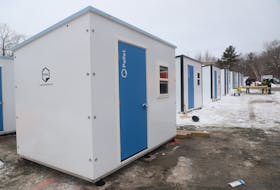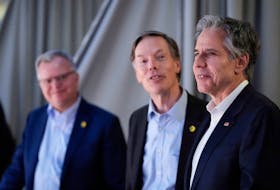NUNATSIAVUT
In early 2017 the federal government set up what they referred to as an Indigenous working group for the Nutrition North food subsidy program. It included representatives from communities and governments in the north, including Nunatsiavut.
In April of this year Inuit Tapiriit Kanatami and four Inuit governments, including Nunatsiavut, pulled out of the working group.
Kristeen McTavish, the Food Security coordinator for the Nunatsiavut Government and the representative who was in the working group, told The Labradorian they withdrew for a number of reasons.
“We became a little bit frustrated with essentially the lack of decision making power or influence that group had and we thought it was starting to feel a little like tokenism,” she said. “They were able to say they had this Indigenous working group but we weren’t able to contribute meaningfully to changes to the program.”
McTavish said when they were first invited to the group it was their understanding it was set up so the federal government could engage with Indigenous communities where the subsidy applies to try to bring some changes and updates to the program. She said it became apparent quickly this was not the case.
“It became clear early on the group didn’t have any decision-making authority and really had no teeth,” she said. “It was set up as a group they could go to with proposed changes, where we could make very small suggestions to where the program operates and even then at the end of the day we had no final say in decision-making or any direct contact with the board for Nutrition North.”
The Inuit groups made their concerns known early on, she said, when they wouldn’t sign the Terms of Reference for the group. When they tried to bring up the concerns they have with the program they were told it wasn’t the proper forum.
“There was no directive to make any large structural or approach changes to how the program operates,” she said. “They only wanted our input on specific scenarios, there wasn’t a space for us to provide concerns about the overall program.”
The program has been in place since 2011 and is supposed to help bring nutritious food to northern communities via a subsidy on food costs.
Updating the program was a promise made by the federal government in 2015. In 2017 a report with a series of recommendations was issued following community consultations. Nunatsiavut voiced the same concerns it has now during that process.
Transparency concern
One of the issues cited in the report was transparency on the data surrounding the program, a concern McTavish said they had at the working group.
“One of the major concerns is about how the subsidy is paid to suppliers and retailers,” she said. “We think this is an inherent issue with the program model.”
The money that the federal government has set aside for the program goes directly to the retailers and McTavish said they don’t feel that the evaluation and transparency mechanisms are in place to see what is being done with those dollars.
“Some of the retailers are making a lot of money off these subsidies,” she said. “I’m not saying the subsidy isn’t being applied to items, but the transparency is not there to know what’s happening with those dollars once they’re given to the stores. Is that really being passed on to the clients in communities? We’re seeing prices increase continuously.”
Need for meaningful engagement
Last year the program spent about $70 million in subsidies, according to data on the Nutrition North website. McTavish said approximately 82 per cent of the funding provided to retailers is for northern Inuit communities. They feel they should be engaged on how decisions are being made and how that money is being spent. They are willing to work with the government, she said, but need to be engaged meaningfully.
“We were afraid that for the Inuit regions to continue to sit on this working group, the optics of that was that the federal government could say they were consulting with us but really we had no decision making power,” she said. “We thought it was better to pull out until we can be engaged in a manner that we want to be engaged with.”
The Labradorian contacted the federal department of Crown-Indigenous Relations and Northern Affairs Canada but repeated requests for an interview were denied. A representative for the department said while the government was disappointed that the Inuit organizations withdrew from the working group, they are hopeful they can “foster constructive dialogue towards food security solutions with Inuit organizations as they have an important and unique perspective to offer.”









